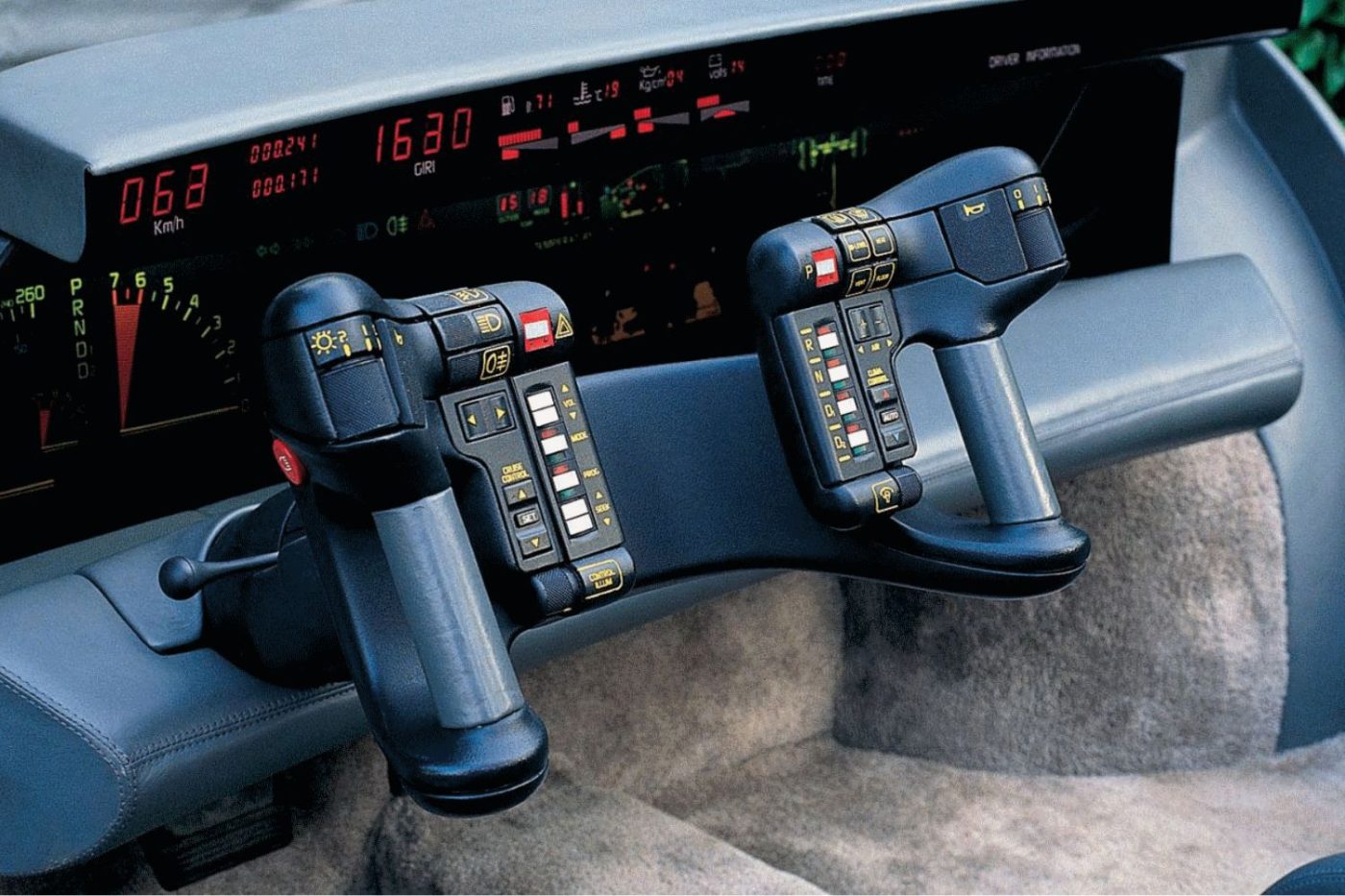- From game console-inspired designs to aircraft yokes, automakers have experimented with radical steering concepts.
- Many innovative designs focused on integrating vehicle controls directly into the steering interface.
- These concept vehicles challenged traditional automotive design, though most never reached production.
Car manufacturers love to dream big. From futuristic doors to self-driving tech, they’ve spent decades turning sci-fi fantasies into reality. But while flying cars like in the popular movie “Back to the Future” have remained a fantasy, manufacturers have gotten creative with something far more important — the steering wheel.
Over the years, carmakers have ditched the classic circular design in favour of everything from fighter jet yoke-style wheels to high-tech control panels that look like something out of a video game console. The goal of these designs was to improve convenience, safety, and driver control. The result ended up being the creation of some of the most bizarre designs in automotive history. Let’s take a spin through the strangest and most unique steering wheels ever made.
In this Unconventional Steering Wheels article.
Pontiac Banshee IV (1988)
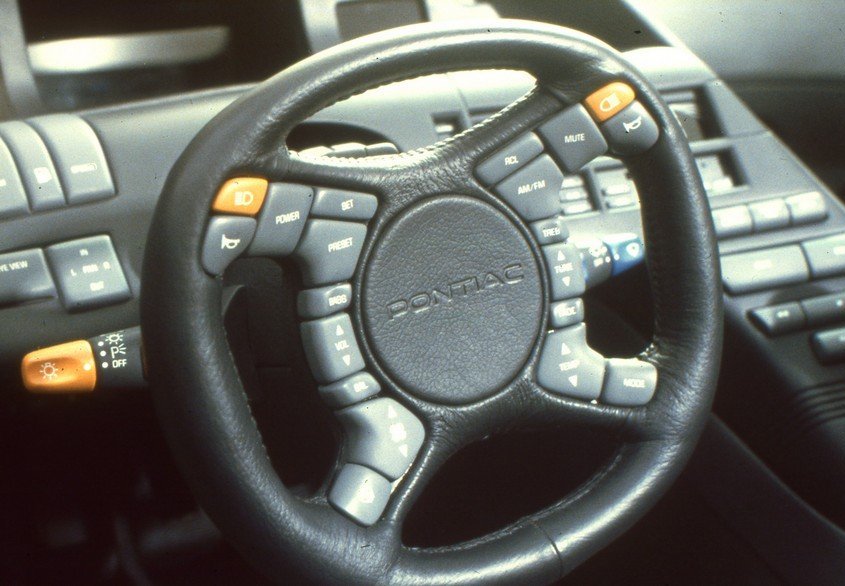
At first look, the steering wheel of the Pontiac Banshee IV looks more like a high-tech puzzle than a driving instrument. This futuristic supercar was revealed at the 1988 Chicago Auto Show and wowed attendees with its aggressive styling and cutting-edge tech.
The wheel was loaded with buttons to give the driver control for everything from air conditioning to turn signals — great in theory, but imagine trying to remember which button does what while speeding down the highway.
Mercury Park Lane Convertible (1965)
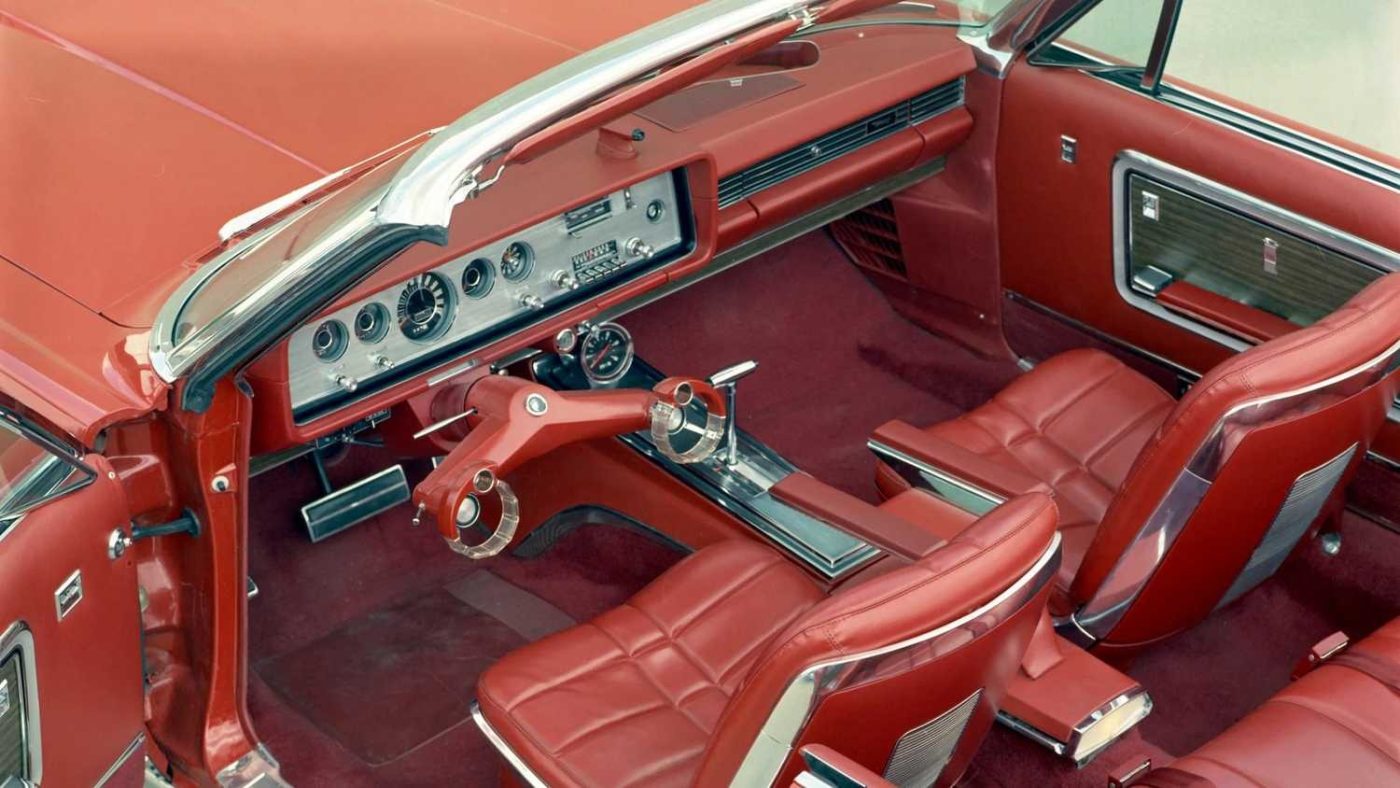
In 1965, Ford decided that conventional steering was too mainstream and created the Wrist Twist. This was an experimental system that replaced the standard wheel with two small, tandem-operated wheels mounted on a lowered column. It was designed to provide increased comfort and visibility and let drivers steer with their arms resting comfortably on armrests. Sounds great until you realize it was so sensitive that even minor inputs sent the car swerving wildly. Needless to say, it was discontinued.
Citroën DS21 IE Pallas (1970)
Citroën has always played by its own rules, and in 1970, it proved that with the single-spoke steering wheel of the DS21 IE Pallas. The design wasn’t just an odd aesthetic choice — it also improved visibility and reduced the chances of injury in case of an accident because by offsetting the spoke, the impact force in a crash could be absorbed more efficiently. This made it one of the earliest attempts at integrating safety into steering wheel design.
Pontiac Trans Sport Concept (1990s)

No, this isn’t a calculator attached to a car but General Motors’ concept car that took a “more is more” approach to steering wheels and crammed over two dozen buttons into the hub. These buttons controlled everything from climate settings and windshield wipers to turn signals and even the vehicle’s CRT screen display on the dashboard. The idea was definitely ahead of its time but it also proved that sometimes, too many buttons is just too much.
Lancia Stratos Sibilo (1978)
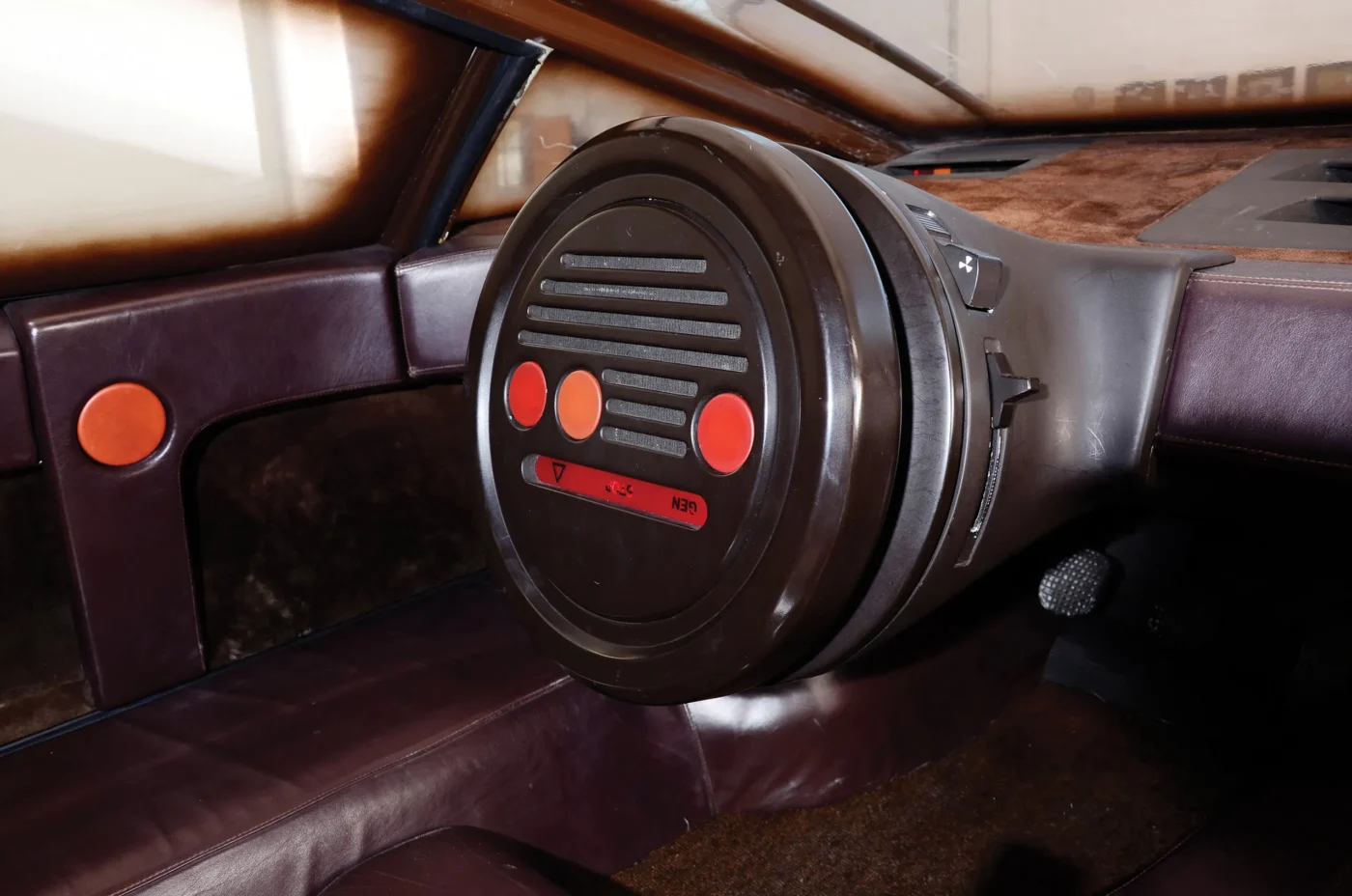
The Lancia Stratos Sibilo was a true spaceship on wheels. It was made in 1978 and had a fully enclosed, circular steering wheel that integrated all vehicle controls, eliminating the need for dashboard buttons entirely. The design was undeniably innovative, but it was also impractical for mass production and remained an experimental concept.
Mazda MX-03 (1983)

If this steering wheel reminds you of something from a fighter jet yoke, you’re not wrong. The Mazda MX-03 Concept from 1983 had a yoke-style wheel with built-in digital controls. It provided access to speed settings, climate controls, and entertainment functions, which reduced the need for traditional dashboard buttons. It even included push-button monitoring and a heads-up display (HUD) that projected driving data onto the windshield. Because of this, the wheel can easily be considered one of the most advanced steering designs of its time.
Lamborghini Athon (1980)
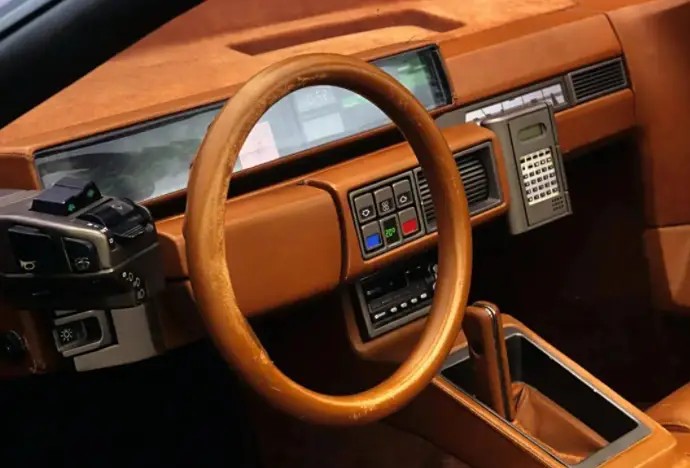
At first look, the Lamborghini Athon’s steering wheel looks like it’s floating in midair by magic. This was inspired by cyberpunk aesthetics of movies like RoboCop and its clean leather rim was attached to the hub by a single spoke. What made it even stranger was that the entire hub rotated along with the wheel when turned. It was sleek and stylish but completely impractical—exactly what you’d expect from a Lamborghini concept.
Oldsmobile Incas (1986)
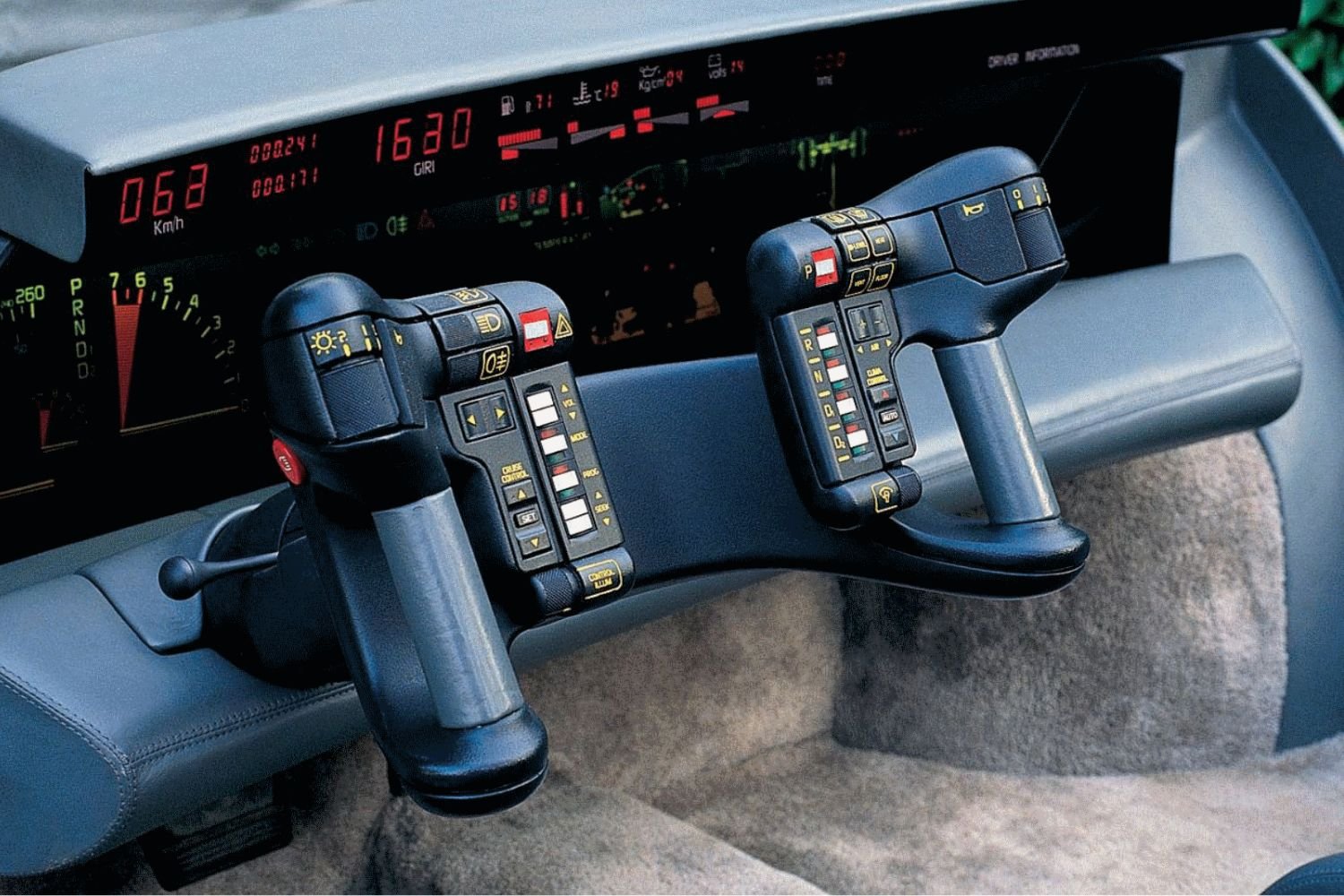
If the Oldsmobile Incas’ steering setup looks like it belongs in an arcade, that’s because it basically does. Instead of a wheel, it had two aircraft-style joysticks for precision manoeuvring, and they were packed with integrated buttons for turn signals, headlights, and cruise control. This fly-by-wire driving experience was as futuristic as it got. While it never hit production, it remains one of the boldest attempts at rethinking how we drive.
These designs may not have made it into everyday cars, but their influence is still felt today. Tesla’s recent introduction of yoke-style steering in some of its models shows that automakers are still willing to experiment with unconventional control schemes. While we may not be flying around in hovercars just yet, we can be sure that automotive designs will never stop evolving.
